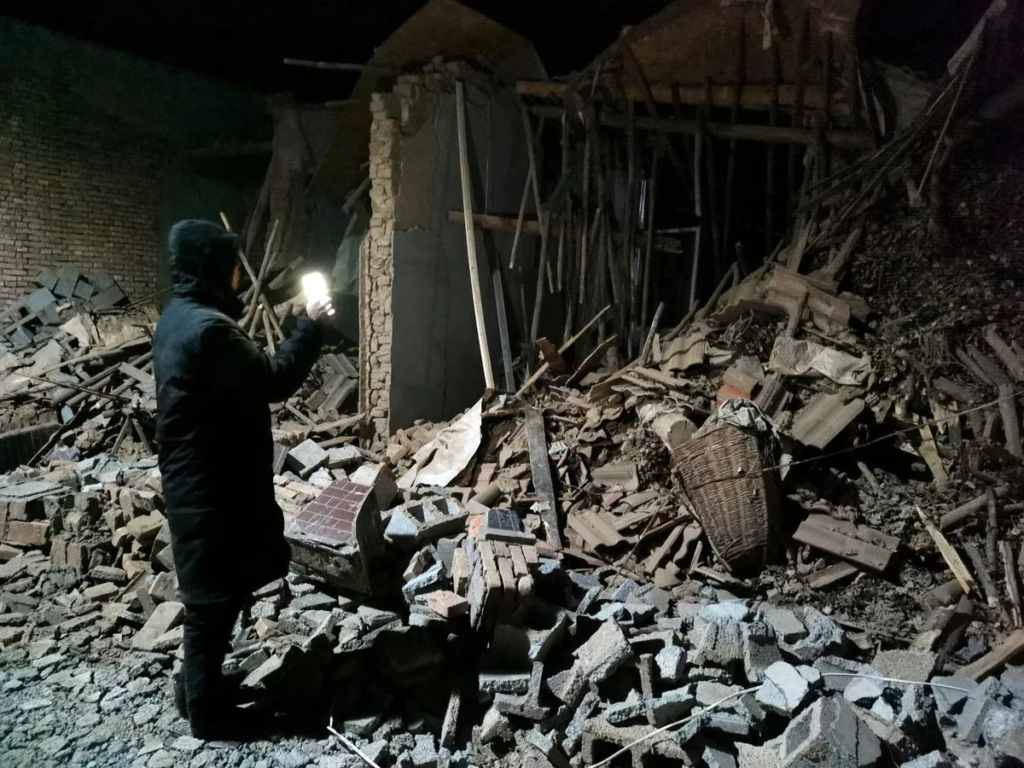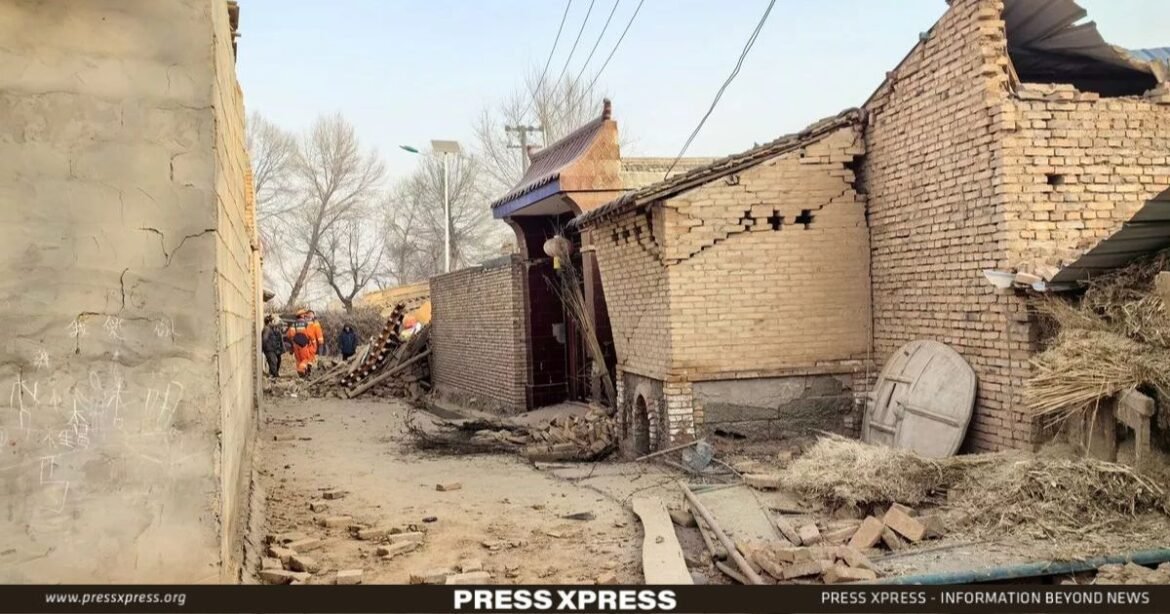Key Points:
- Economic blow: Agricultural & fisheries sectors hit hard.
- Lives lost: 149 fatalities, 1,000+ injuries.
- Over 14,000 homes destroyed.
The earthquake is the only natural disaster that cannot be predicted by science and technology. Even the most advanced human-made technology won’t warn us minutes before a tremor, no matter how mild or severe it is, causes chaos in a specific region of the planet Erath. Due to this element of unpredictability, earthquakes are the most resented and can often prove to be deadly.
A seismic jolt with a magnitude of 6.2 struck northwest China, leaving a trail of devastation in its wake. The aftermath has been harrowing, claiming the lives of at least 149 individuals and causing irreparable damage to homes and livelihoods. The region, nestled amidst the rugged terrain between Gansu and Qinghai provinces, bore the brunt of this catastrophic event, setting off a series of economic repercussions that are reverberating through its agricultural and fisheries sectors.
However, the recent earthquake stands out as the deadliest in the country in almost a decade, underscoring the persistent vulnerability of these areas to natural disasters.
Agricultural and Fisheries Industries Hit Hard
Reports from state media outlets unveil a grim reality: the economic losses inflicted by the earthquake are estimated to be in the tens of millions for the agricultural and fisheries sectors. Preliminary assessments conducted by officials in Gansu province indicate staggering losses amounting to 532 million yuan (approximately $74.6 million). This catastrophic blow has prompted urgent considerations regarding the utilization of the relief fund established just days before the seismic event. The aim is to revive the agricultural sector swiftly, ensuring a prompt resumption of production.
Toll on Lives and Infrastructure
The seismic event, registering a magnitude of 6.2, struck a mountainous region shared between Gansu and Qinghai provinces. Its impact rippled across the landscape, claiming 117 lives in Gansu and 31 in neighboring Qinghai. Tragically, three individuals are still unaccounted for. The aftermath is marked by a staggering toll on human life, with nearly 1,000 individuals sustaining injuries and over 14,000 homes reduced to rubble, as per reports by Reuters.

Immediate Relief Efforts and Challenges
In response to the urgent need for shelter, CGTN, the international arm of China’s state broadcaster, highlighted the swift construction of 500 temporary housing units in Meipo village, Gansu. These provisions aim to accommodate displaced residents, many of whom endured the harsh elements in makeshift shelters as temperatures plummeted below freezing. The community grapples with the emotional weight of the disaster, evident in the traditional funerals held, honoring the Muslim customs prevalent in the affected areas.
China’s Historical Context
The seismic vulnerability of western China, encompassing regions like Gansu, Qinghai, Sichuan, Yunnan, Xinjiang, and Tibet, is a recurrent reality. Earthquakes have historically plagued these areas, and the recent tremor stands out as the deadliest in the nation in almost a decade. This region, nestled amid rugged terrains and geological fault lines, remains prone to such natural upheavals, necessitating ongoing preparedness and response strategies.
As the affected communities strive to rebuild and recover, the focus remains on immediate relief efforts, rehabilitation, and the daunting task of reconstruction. The solidarity and resilience displayed in the face of adversity highlight the unwavering spirit of the affected populace, standing as a testament to their strength amid profound loss and destruction.
Painful Past Tragedy
Unfortunately, this earthquake resembles a severe quake that rattled eastern Afghanistan in June 2022. Occurring in rugged terrain, it demolished stone and mud-brick homes, marking it as the deadliest quake the country faced in two decades, claiming over 1,000 lives and injuring around 1,500.
In March, northeastern Afghanistan was hit by another catastrophic earthquake, causing mass evacuations, destroying buildings, and triggering destructive landslides.
Amidst the aftermath, the international community stands committed to aiding the Afghan people, offering support and hope amidst the devastation.
More recently, Morocco experienced a devastating earthquake. Striking the High Atlas Mountain range with a magnitude of 6.8 on September 8th, the quake claimed a grim toll of 2,122 lives, predominantly in Al-Haouz and Taroudant provinces, with 2,421 reported injuries.
Earthquakes in Bangladesh
- USGS locates the recent Bangladesh earthquake in Kanaighat, near Dhaka
- The July 26, 2003, earthquake is still the most powerful in recent Bangladesh history (5.6 magnitude)
- Bangladesh has experienced three earthquakes above magnitude 5, including a recent one
- 17 earthquakes were reported in Bangladesh over the past year, mainly in Chattogram and Cox’s Bazar areas
Bangladeshi experts foresee significant earthquake damage looming
Geologists and experts have raised concerns about potential earthquakes in Bangladesh. However, Mir Fazlul Karim, a former director of the Geological Survey of Bangladesh, holds a different view. He disagrees with estimations of major earthquakes, citing Bangladesh’s geological makeup as insufficient to generate such high-magnitude events in one go.
The understanding of Bangladesh’s earthquake risk is limited due to a lack of comprehensive scientific assessment. Model-based predictions lack solid backing from field studies specific to the country. According to Karim, these uncertain predictions could burden disaster management and hinder the nation’s development.
Historical records and geological maps suggest a moderate earthquake risk in Bangladesh, despite global seismic response maps indicating lower hazard zones encompassing most of the country, including Dhaka.


